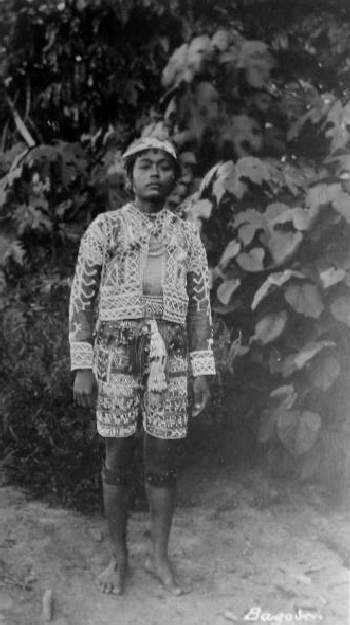
Figure 1.--This commercial postcard shows a boy from Mindanao in 1909. Some one wrote "a mountain boy of the Philippines on the back". This was presumably an outfit for special occassions. |

|
Regional differences can be particularly pronounced in archepeligo countries like the Philippines and Indonesia. And we do see pronounced regional differences among the many islands of the Philippines. This has gradually declined since World war II as a result of improved transportation and mass media. The term region has a specific meaning in the Philippines. The country currently has 81 provinces (lalawigan) organized into 11 regions (rehiyon). The divisions and provinces change somewhat over time. The regions are organized geographically around three major islands (Luzon in the north, Visayas in the central region, and Minanao in the south). The smaller islands are grouped into one of the 11 large-island based regions. Luzon is the most important island It has the largest population and the capital od Manila is located there. Mindoro is grouped with the Luzon regions. Visayas includes a number of islands including Cebu and Leyte. There are important ethnic, cultural, economic, and relgion differences between the various provinces. Manila on Luzon is a very modern city. Some of the other provinces are much less developed. This is particularly the case on Mindanao which is much less densly populated than Luzon. The Philippines is a largely Catholic country. There is the Autonomous Region in Muslim Mindanao (ARMM) located on the western side of the island. This is the region of the Philippines that is predominantly Muslim and is made up of several provinces (Basilan, Lanao del Sur, Maguindanao, Shariff Kabunsuan, Sulu and Tawi-Tawi). It also includes the Philippines' only predominantly Muslim city--Marawi.
The northern Philippines is dominated by Luzon. Luzon is the most important island in the Philippines. It has the largest population and the capital of Manila is located there. The other northern regions are areas of Luzon. Mindoro is grouped with the Luzon regions. Manila on Luzon is a very large, modern city and a sepatate region.
Visayas is the most diverse area of the Philippines. Unlike the north and south, there is no one dominant island. Visayas incluses includes a number of islands, The major islans from west to east are: Panay, Negros, Cebu, Bohol, Leyte, and Samar, but there are many smaller islands. Visayas is administratively divided into a Western, Central, and Easter Division. The first people settle Visayas were Austronesians and Negritos who migrated to the islands (beginning about 30,000 years ago), but continuing in arrivals of new groups for thousabnds of years (Until about 6,000 years ago). These were small animist tribal groups. A new ethnic and cultural group began arriving in the modern era, refugees from the collapsing empires of Srivijaya, Majapahit and Brunei (12th cebtury AD). They were led led by Datu Puti and his tribal followers. They primarily settled on Panay and its many small surrounding islands. Panay is located southeast of Mindoro and northwest of Negros. (The USS Panay sunk by the Japanese in n incident before World War II was named after Panay. Arab traders operating in the Malay and Indonesian Archepelago reached Vicayas (14th century). They converted some tribal groups to Islam, although religious practices tended to be a mixture of Islam and animism. There is also evidence of trade with other areas of Asia and the pricipalities developing what is now Indinesia ana Malaysia. The first Europeans to reach Visayas and the Philippines was Ferdinand Magellan who landed on Cebu (1521). He found that locals were able to converse in Malay. It was Spain who actually colonized the Philippines. King Philip II of Spain dispatched two expeditions, Ruy López de Villalobos (1543) and Miguel López de Legazpi (1543). The islands were named after Philip. Under Spanish control, tribal groups in Visayas began converting to Christianity and adopting a westenized culture. Gradually resistance to Spanish ruke began to build. An early leader in the Visayas area was Francisco Dagohoy. Negros was an important part of the Filipino resistance to the Spanish and played a role in the Philippine–American War (1898-1913). The World War II Battle of Leyte Gulf was the greatest navaln battle in history. It was followed by heavy ground fighting on Leyte.
The southern Philippines is dominated by Mindanao. Some of the other provinces are less developed tham Luzon and Manila. This is particularly the case on Mindanao which is much less densly populated than Luzon. The Philippines is a largely Catholic country. There is the Autonomous Region in Muslim Mindanao (ARMM) located on the western side of the island. This is the region of the Philippines that is predominantly Muslim and is made up of several provinces (Basilan, Lanao del Sur, Maguindanao, Shariff Kabunsuan, Sulu and Tawi-Tawi). It also includes the Philippines' only predominantly Muslim city--Marawi.
Navigate the Boys' Historical Clothing Web Site:
[Return to the Main Philippines page]
[Return to the Main Oceania page]
[Return to the Main countries page]
[Introduction]
[Activities]
[Biographies]
[Chronology]
[Cloth and textiles]
[Clothing styles]
[Countries]
[Topics]
[Bibliographies]
[Contributions]
[FAQs]
[Glossaries]
[Images]
[Links]
[Registration]
[Tools]
[Boys' Clothing Home]
